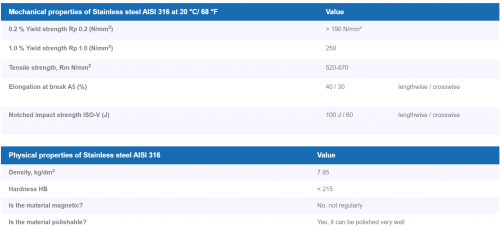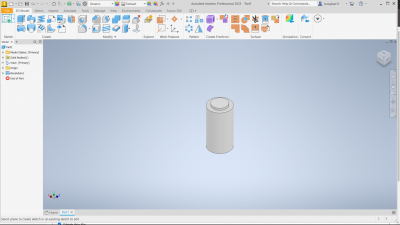M. Reyhan Fachriansyah Hermawan
Contents
Introduction
My conciousness is my top priority
Name: M. Reyhan Fachriansyah Hermawan
NPM: 2106657172
Major: Mechanical Engineering KKI
DoB: 19 April 2003
E-mail: reyhanfachriansyah@gmail.com
Hello All!
My name is Reyhan Fachriansyah, you can call me fahri. This is my page that contains the progress of my ongoing assigned project for Numerical Method course in my fourth semester. My future goal is to establish several high-tech manufacturing company revolving around robotics, sensors, and renewable energy. I hope by undertaking this course, i will bring my self closer to my goal by expanding my knowledge and conciousness
Class Abstract
23 May 2023
This day is the first day of our course, lectured by Pak Dr. Ahmad Indra Siswantara or commonly called as "pak Dai". In this day we were given knowledge about how conciousness highly important to our daily life espescially affecting Numerical Methodology. Pak Dai also lectured us about Cara Cerdas Ingat Tuhan.
30 May 2023
On today's session, Mr. Dai assigned us to discuss together about our main project of Numerical Method with our friend Patrick Samperuru as the discussion moderator as the head of class's replacement. Each of the attendants were given several chance of public-explanation in front of the class in order to complete our project, which entails designing a functional hydrogen tank that is optimized within the constraints of pressure constraints at 8 bar, 1 liter capacity, and a maximum budget of IDR 500,000, all participants are asked to contribute their thoughts in the form of opinions and personal viewpoints. There were two session on todays dicussion, which is material discussion and optimization discussion.
The discussion was then continued by one of our friend Patrick Samperuru in the first discussion for applicable materials, Patrick then listed a number of possible materials that can be used as the hydrogen tank based on the different hydrogen tank types such as type I, (all metal), type II, (metal with a carbon fiber wrap), type III, (composite with metal lining), and type IV, (composite with non-metal lining). But for this project, he reckon that the most probable type of hydrogen tank would be the type I or II since the production would be easier, and also theoritically be able to withold 8 bar of pressure, thus the end production price will be more affordable for our capped cost of IDR 500,000. In the next turn, Reyhan Fachri stated the details of several possible material that can be applied as hydrogen tank, this inlcudes AISI 316, AISI 304, AISI 316L, AISI 304L. Cu, or Al alloys are commonly used as the main material for hydrogen tanks since it is largely immune to hydrogen effects at ambient temperatures.
For the second session of the discussion which is optimization discussion several attendee points out the three key areas required for our optimization. The area consists of design variable, goal function, and constraint, all of which may vary for each member of the class. Reyhan Fachri began by describing his objective function, which is weight consideration. In sectors like aircraft, home appliences or the automobile, where weight is particularly important, hydrogen tanks are frequently employed. Therefore, while retaining structural integrity, the tank design should strive to reduce weight. Ikhsan Rahadian then points out the importance of structural integrity to bear internal pressure, external loads, and other environmental conditions, the tank has to be structurally sound. To assure the tank's stability and strength, structural study, including finite element analysis. After that, M. Annawfal Rizky mentioned that he wanted the limitation to be the compatibility with hydrogen gas: 'The tank material should be compatible with hydrogen gas to prevent any chemical reactions, embrittlement, or degradation that could affect the tank's performance or safety', he said.
Design and Optimization Project - Hydrogen Tank
Project Overview
This design and optimization project is assigned by our lecturer Pak Dr. Ahmad Indra Siswantara as an individual project/task as a learning method to use Numerical Method as a tool for real-life application problems. The project consist of designing a hydrogen tank with some constraints: consider being the gas pressurized at 8 bars, a required volume of 1 liter, and a maximum budget of 500,000 IDR to make one. Hydrogen gas has a high level of danger espescially when pressurized to a high pressure by reason of the likelihood of explosion. Thus, it is crucial for engineers to design and optimize a safe hydrogen tanks for several type of real life practices.
When building a hydrogen storage facility, the following factors should be taken into account:
- Fatigue Resistance: Tanks must be built to sustain the necessary pressure, which is commonly expressed in bars or pounds per square inch (psi). The needed material strength, wall thickness, and structural design will be determined by the pressure rating.
- Limitations on volume and shape: The tank's overall dimensions and shape will depend on the available space and required capacity. The tank should be made to fit the area allotted for it and to have the appropriate volume.
- Material compatibility: It's important to use materials that are friendly to hydrogen since it might embrittle or have other negative effects on some materials. Carbon fiber composites, high-strength steel alloys, and several aluminum alloys are popular options.
- Weight considerations: Applications where weight is important, such in the aerospace or automobile sectors that is frequently employ hydrogen tanks inside. Therefore, while retaining structural integrity, the tank design should be able to reduce it own weight.
- Safety Features: Due to its great flammability, hydrogen demands extra safety measures. To avoid overpressurization, reduce hazards, and maintain safe operation, it is crucial to include the proper safety measures, such as pressure release devices, burst discs, and leak detection systems.
- Operational Environtment: Which includes temperature changes, exposure to moisture or chemicals, and potential impacts or vibration. The tank should be constructed so that it can resist these circumstances without losing integrity.
Hydrogen Gas Study
The lightest gas in the universe, hydrogen is often found as the diatomic gas H2, and it is typically non-reactive. However, when it is gaseous, it easily burns. Despite having a moderate reactivity, hydrogen takes up a substantial amount of space when exposed to typical circumstances like atmospheric pressure. This volume has to be decreased in order to facilitate effective storage and transit. High-pressure storage as a gas, extremely low-temperature storage as a liquid, or solid-state storage utilizing hydrides are the most used techniques for improving hydrogen storage and transit efficiency (albeit the first two techniques are more popular). Pressurization up to 700 bars or more is required to provide the greatest hydrogen output in a specific container capacity, requiring significant energy and a durable container design. Because it is cryogenic, liquid hydrogen needs to be kept at very low temperatures in order to preserve its liquid condition and avoid considerable evaporation. The attention changes away from the hydrogen yield's efficiency in the current scenario, though, where a tiny storage volume and constrained pressure are involved, to the cost and efficiency of the container material. In Indonesia, the average interior temperature is around 30 degrees Celsius, and the hydrogen gas has a density of 0.627 kilograms per cubic meter at 8 bars of pressure. Consequently, the gas weights 0.627 grams, or less than 0.001 kg, per liter, or 0.001 cubic meters. This suggests that in order to store the gas under these circumstances, a container's material and design must be able to sustain an 8 bar wall pressure. In order to guarantee that the weight of the container as a whole is much more than the weight of the gas being held, the container's density should ideally be lower.
Material Choice
Because they can withstand the cryogenic temperatures (about -253 degrees Celsius), Type 614 austenitic stainless steels are frequently utilized for liquid hydrogen services. Austenitic stainless steels have strong ductility and energy absorption characteristics at such low temperatures, which is crucial for preserving safety. However, compared to other materials, austenitic stainless steel has a substantially lower hydrogen diffusion rate. Stainless steel outperforms other hydrogen pipeline materials in harsh situations due to its strong corrosion resistance.
Geometrical Constraint
"Geometrical constraint" refers to a restriction or requirement pertaining to the hydrogen tank's geometrical features. It outlines any restrictions or prerequisites that the tank's measurements, including its height and radius, must meet. The geomterical constraint is used to guarantee the tank's shape and capacity, optimizing its design for a particular use or objective. You are establishing the acceptable range of tank size by putting these restrictions in place. The optimization procedure then seeks to identify the ideal dimensions that reduce the thickness of the tank while satisfying other criteria like pressure limitations and material strength. The code below is the product of reviewing other geometrical constraint code from a variety of sources on the internet.
import numpy as np
from scipy.optimize import minimize
def objective(x):
R, V = x
h = 4 * np.sqrt((np.pi * R**2 * 4 - V) / np.pi)
r = h / 4
thickness = R - r
return thickness
def volume_constraint(x):
R, V = x
h = 4 * np.sqrt((np.pi * R**2 * 4 - V) / np.pi)
r = h / 4
return np.pi * h * (R**2 - r**2) - V
def pressure_constraint(x):
R, V = x
t = R - (R / 4)
stress = 8 * R / (2 * t)
allowable_stress = 75 * 1000 # ksi to psi
return allowable_stress - stress
# Define the initial guess for R and V in mm
x0 = np.array([100, 125]) # initial guess for R and V
# Define the bounds for R and V in mm
bounds = [(0, None), (100, 150)]
# Define the constraints
constraints = [
{'type': 'eq', 'fun': volume_constraint},
{'type': 'ineq', 'fun': pressure_constraint}
]
# Perform the optimization
result = minimize(objective, x0, method='SLSQP', bounds=bounds, constraints=constraints)
# Extract the optimal values
R_opt, V_opt = result.x
h_opt = 4 * np.sqrt((np.pi * R_opt**2 * 4 - V_opt) / np.pi)
r_opt = h_opt / 4
thickness_opt = R_opt - r_opt
# Print the optimal results
print('Optimal Dimensions:')
print('Outer Radius (R):', R_opt, 'cm')
print('Inner Radius (r):', r_opt, 'cm')
print('Height (h):', h_opt, 'cm')
print('Thickness:', thickness_opt, 'mm')
The code's output is displayed on the bottom left, along with the recommended shape for a cylindrical tank with a 1 liter by using AISI 614 material is:
Optimal Dimensions: Outer Radius (R): 3.837168217663359 cm Inner Radius (r): 3.3390053601356486 cm Height (h): 13.356021440542595 cm Thickness: 0.4981628575277104 mm
Volume of the tank is:
Volume = π * h * (R^2 - r^2)
Volume = π * 13.3560 * (3.837^2 - 3.339^2) cm^3 Volume ≈ 754.168 cm^3
Therefore, with the given dimensions, the volume of the cylinder is approximately 754.168 cubic millimeters (mm^3).
Surface are of the cylinder is:
A=2πrh+2πr2=2·π·3.84·13.36+2·π·3.842≈414.49885mm^2
End Cap Compensation
The bulges or convex shapes often observed on each end of gas tanks serve multiple purposes related to safety and structural integrity. Here are the main reasons why gas tanks have bulges on each end:
1. Reinforcement: Gas tanks' bulges at the ends serve as structural reinforcement. The tank becomes stronger to withstand internal and external stresses by adding curvature to the ends. This reinforcement contributes to the tank's increased longevity by boosting its resistance to deformation, impacts, and other forces.
2. Stress Distribution: The bulges help the tank's tension to be distributed more evenly. The tank's curved design helps spread the load when pressure or other external forces are applied, which lowers localized stress concentrations. The tank's resistance to deformation and probable failure under harsh conditions is improved by this design element.
3. Safety and Containment: The bulges really helps in preventing damage to the tank in the case of an accident or hit. They serve as a buffer, absorbing and dispersing forces before they enter the main body of the tank by spreading outward. By assisting in the prevention of tears or punctures, this design lowers the possibility of leaks and other possible risks related to gas containment.
It's important to note that the specific design and shape of gas tanks can vary depending on factors such as the type of gas being stored, the intended application, and safety regulations. The bulges on the ends of gas tanks are one of the common design features employed to ensure safe and reliable storage of gases.
The purpose of end cap compensation is to precisely calculate a cylindrical tank's useable capacity. The purpose is to offer accurate measurements or computations for storing liquids or other substances by taking into consideration the volume occupied by the end caps. End cap compensation makes ensuring that the quoted capacity accurately represents the volume that is really available for usage by taking the end caps' space into account. In many different industries, including engineering, manufacturing, and storage, accurate measurements are essential for effective operations and exact planning.
from scipy.integrate import quad
import numpy as np
# Function to calculate the surface area of a circle
def circle_area(radius):
return np.pi * radius**2
# Given values
R = 3.837 # Outer Radius in mm
r = 3.339 # Inner Radius in mm
h = 13.3565 # Height in mm
thickness = 0.5 # Thickness in mm ROUNDED
# Calculate the surface area of the outer circle
A_outer, _ = quad(circle_area, 0, R)
# Calculate the surface area of the inner circle
A_inner, _ = quad(circle_area, 0, r)
# Calculate the surface area of the end cap
A_end_cap = A_outer - A_inner
# Calculate the end cap compensation
end_cap_compensation = A_end_cap * thickness
print("End Cap Compensation: {:.4f} mm^3".format(end_cap_compensation))
The final code of the end cap compensatiion result is:
End Cap Compensation: 10.0867 cm^3
Total surface area of the tank is:
414.498 + 10.0867 = 424,5847 cm^2
3D CAD Modelling, Conclusion & Evaluation
In conclusion, the use of numerical methods made it possible to calculate the hydrogen tank's dimensions in accordance with the design's strength and cost. In this case, the use of Python coding served as a facilitator for computing a variety of quantities that are based on a variety of other quantities as well as characteristics. The coding can be beneficial to our need in calculating the optimization for several condition such as Hydrogen Tank. Making the computations more precise and realistically will, in my opinion, be the greatest strategy for future advancements. It will also be a fantastic addition if we incorporate simulation, such as from ansys, solidworks, or other CAD program. There are certain presumptions that the optimization may not make the best use of, and there are some idealizations that may not be appropriate in this particular situation.





